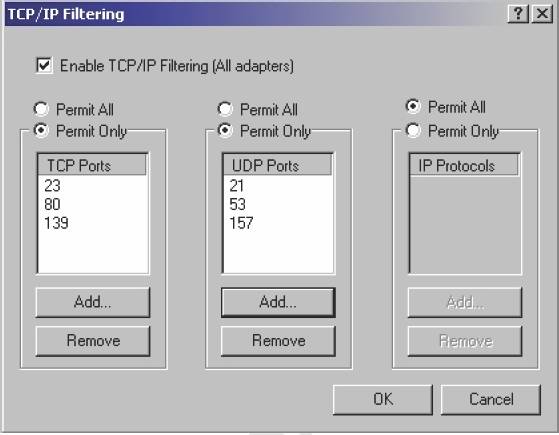微软认证70-210模拟试卷1
-
You are the network administrator for Ezonexam.com. Your network has 210 Windows 2000 Professional computers and eleven Windows 2000 Server computers. Users on the network save their work files in home folders on a network server. The NTFS partition that contains the home folders has Encrypting File System (EFS) enabled. A user named Sandra leaves Ezonexam.com. You decrypt the files for her manager. When the manager attempts to open any of the files, he receives the following error message: "Access is denied."
You want the manager to be able to access the files.
What should do? (Each correct answer presents a complete solution. Choose two.)
- A.Move the files from Sandra's folder to the manager's folder.
- B.Grant the manager NTFSFull Controlpermission to the files.
- C.Run theciphercommand to create a new file encryption key for the manager.
- D.Run theciphercommand to generate an EFS recovery agent key and certificate.
- E.Grant the manager NTFSList Folder Contentspermissions to the folder containing Sandra's files.
-
You are preparing to install Windows 2000 Professional on 75 new computers. You want to create a standard installation image to use on all the new computers. The computers have several different configurations of hard disks and hardware components.
You install Windows 2000 Professional and other standard software on one of the computers. You log on to the computer using the local Administrator account. You configure the standard applications and customize the desktop settings you intend to deploy.
You run the Setup Manager and create a Sysprep.inf file. You copy Sysprep.exe and Setupcl.exe to the C:\Sysprep folder. You run Sysprep.exe and run your third party disk imaging software.
You copy the image to the several test computers and restart the computers. When the installation is complete, you find that some of the computers do not function at all. You also find that the desktop settings do not appear as you have configured them on the original computer.
You want to correct the imaging process and ensure that all computers have the same standard desktop.
What should you do? (Choose two)
- A.Copy Sysprep.inf to C:\Sysprep folder.
- B.Copy the Administrator profile to the Default User profile, and then grant permissions to the Everyone group to use the profile.
- C.Include the-pnpparameter for Sysprep.exe when you rerun that utility.
- D.Include the-nosidgenparameter for Sysprep.exe when you rerun that utility.
-
As a Ezonexam employee you are the desktop administrator of a Windows 2000 Professional computer.
The Windows 2000 Professional computer has 25 MB of free disk space drive C and 800 MB of free disks pace on drive E. You are unable to print large documents because if inadequate disk space on drive C.
You want to be able to use the space on drive E to print large documents.
What should you do?
- A.From the Printer Properties dialog box, change the location field to E:\Winnt\System32\Spool\Printers.
- B.From the Print Server Properties dialog box, change the location of the spool folder to any existing file path on drive E.
- C.Copy the C:\Winnt\System32\Spool\Printers folder to the E:\Winnt\System32\Spool\Printers folder.
- D.Mount drive C as a subdirectory on drive E.
-
You configure your Windows 2000 Professional computer for Internet Connection Sharing and for TCP/IP filtering as shown in the exhibit.

You test your TCP/IP filtering configuration from another client computer. You can access web sites, but you cannot access FTP sites.
What should you do to be able to access FTP sites?
- A.Add Port 21 to the TCP Ports section.
- B.Add Port 138 to the TCP Ports section.
- C.Add Port 21 to the IP Ports section.
- D.Add Port 138 to the IP Ports section.
-
You are the administrator of a Windows 2000 network. Your network includes 75 Windows NT Workstation 4.0 computers. You are adding 50 new PXE-compliant computers to the network. The hardware on each computer is configured identically.
You are using a RIS image to deploy Windows 2000 Professional to the 50 computers. You successfully install Windows 2000 Professional on the first 10 computers. However, you cannot install Windows 2000 Professional on remaining 40 computers.
What should you do?
- A.Configure the DHCP scope to add additional IP addresses.
- B.Run Rbfg.exe from the RemoteInstall\Admin folder on the RIS server.
- C.Modify the startup sequence in the CMOS of the remaining computers.
- D.Create computer accounts on the remaining computers in the Active Directory.
